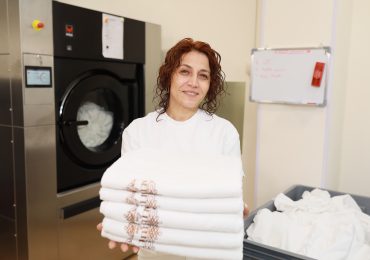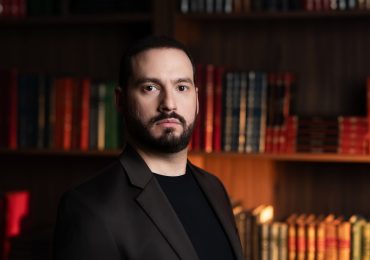The growing resistance to antibiotics has prompted the world to rediscover phages. Under the leadership of young innovator Rati Golijashvili, BioChimPharm is writing a new chapter in the history of medicine. This presents a golden opportunity for Georgia, the birthplace of bacteriophage technology.
Stepping into the bacteriophage building on Gotua Street in Tbilisi feels like traveling back in time. As you pass massive white pillars, you arrive in a large lobby where you are overwhelmed by the strict monumentality of Soviet architecture. Faded drug labels from decades past are displayed on an old gray stand. Just a few steps from the Soviet-era stand, luminous letters on a bright yellow wall spell out ‘Phage Enterprise.’ Flags of Georgia and the European Union are displayed in front of the wall. Without this corner of the lobby, it would be difficult to tell which era you are in. Behind the door lies a high-tech enterprise that produces innovative drugs using historic bacteriophage technology.
While showing us around the enterprise, BioChimPharm’s General Manager, Rati Golijashvili, explains that this is the cleanest room in the South Caucasus. The air in this room is replaced every minute. Powerful High-Efficiency Particulate Air (HEPA) filters effectively remove dust particles and bacteria, but a more significant threat to bacteria in the building comes from phages. This space, along with the rest of the infrastructure, is the result of a massive modernization project carried out between 2021 and 2023 at a cost of ₾17.5 million. The historic building and its 60 rooms were fully renovated and re-equipped. The company has obtained European Good Manufacturing Practice (GMP) status, which will enable BioChimPharm to manufacture vaccines in the future. Its immediate goal, however, is to offer an alternative to antibiotics.
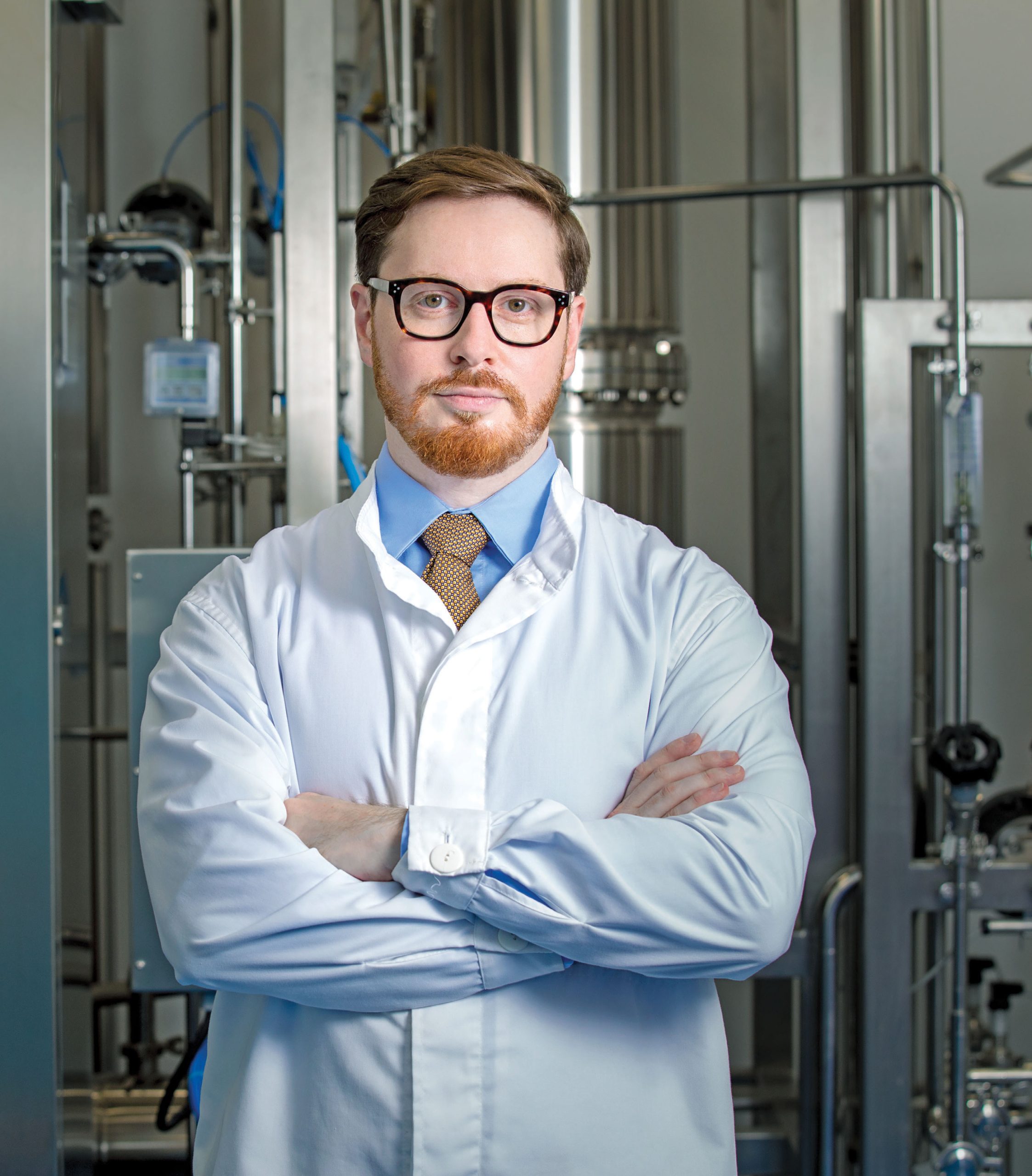
The scientific community’s rising interest in bacteriophages is largely driven by the escalating global crisis of antibiotic resistance. Antibiotics have been actively used for the past eight decades to treat various diseases. During this time, bacteria have learned to resist antibiotics. Bacteria that are no longer affected by known antibiotics are referred to as superbugs or superbacteria. They cause five million deaths each year. Scientists estimate that if no action is taken soon, antibiotic resistance could become a bigger threat to humanity in 50 years than cancer and diabetes combined. The world is actively looking for an alternative to antibiotics, but finding a method that harms bacteria without harming humans is difficult. The solution may not be to invent a new method but to recall a forgotten old technology.
Phages are the most common microorganisms on Earth and have regulated bacterial populations in the environment for centuries. The principle of their cultivation is simple: wherever bacteria are found, phages are usually hunting them. Isolating, studying, and cataloging these tiny living organisms is altogether more complex. Phages resemble miniature robots from science fiction, with big heads, long bodies, and tiny legs that cling to the surface of bacteria, disrupt the membrane, and inject their own genetic information into the bacteria. After reproducing, the phages destroy the bacteria and repeat this process until the food supply is exhausted – that is, until the infection is eliminated. Phages are unique because they reproduce independently once inside the human body. If antibiotics act like mines that destroy everything around them, phages are more like snipers with a specific target in their crosshairs. The high specificity of phages is both an advantage and a limitation. The advantage is that phage-based drugs do not threaten the healthy microflora in the human body, but it also means that each bacterium must have its own phage. This requires advanced technology, financial resources, time, and patience.

Rati shows us the device BioChimPharm uses to reproduce phages. Inside the bioreactor, an invisible battle is raging between phages and bacteria. Phages consistently emerge victorious on the microscopic battlefield: “First, we nourish the bacteria to make them stronger. We then introduce the phages at specific times, effectively turning the bacteria into breeding factories for the phages,” Rati explains. At the end of the process, the bioreactor contains the destroyed bacteria and trillions of phages. After multiple filtrations, the concentrated mass of phages is dissolved in injection water and transformed into medicine. The enterprise currently produces over 15 drugs using phage technology.
For 34-year-old Rati Golijashvili, phages represent both a life mission and a family business. He comes from a family of pharmacists and grew up hearing bedtime stories about brave phages and evil bacteria. His father, Alexander, started working in a phage enterprise in 1982 and later founded BioChimPharm together with his colleagues in the same building. The historic phage lab, based on which the company was founded, has almost 100 years of history to its name.
The story of bacteriophages is closely intertwined with Georgian history. It starts with the friendship between two scientists, Felix d’Herelle from Canada and Giorgi Eliava from Georgia. In 1917, d’Herelle discovered several clean spots in the otherwise heavily polluted Ganges and explained this phenomenon through the presence of invisible microorganisms that hunt bacteria. His hypothesis was not met with much enthusiasm at the Pasteur Institute, where he worked at the time. Microbiology was still in its infancy, and it was not until 1940 that an electronic microscope produced the first image of a phage. Although d’Herelle failed to present convincing arguments to overcome the skepticism of his colleagues, his efforts nevertheless left an impression in certain circles. “Deadly little Bacilli have an even smaller enemy,” the New York Times wrote in 1925.
While d’Herelle was busy researching his discovery, the Georgian scientist Giorgi Eliava was in Paris studying vaccination technology. Eliava first became d’Herelle’s student and then his friend. Fascinated by the phage theory, he invited d’Herelle to Georgia. The two scientists managed to convince the Soviet authorities to establish the world’s first research institute focused on bacteriophages in the Saburtalo district of Tbilisi. While the facility was being built, d’Herelle moved to Tbilisi and even wrote a book here, but the good times did not last long for the two scientists. Soon after construction of the facility was completed in 1937, Giorgi Eliava was arrested by the authorities, charged with conspiring against the state (planning an epidemiological event), and executed together with his wife. Shocked by these events, Felix d’Herelle fled Georgia and never returned. The story of phages had to continue without the founders of the institute.

Penicillin was discovered about a decade after d’Herelle’s discovery, causing interest in phages in the West to wane. Before they disappeared from global view, phages gained attention for another reason: their simple molecular structure proved useful in studying genes in DNA. Nobel laureates Max Delbrück and Francis Crick, who significantly contributed to DNA research, initially studied phages.
Research and development of phage technology continued behind the Iron Curtain during the Cold War. At the height of its research activity, the Institute of Bacteriophages employed up to 1,300 people during the Second World War. The primary recipient of the drugs produced by the phage lab was the Soviet army. The institute, which focused equally on research and production, supplied the whole Soviet Union and produced 150-200 tons of drugs each week, including vaccines and serums. Production was substantial enough for a separate railway line to lead to the institute’s premises, where wagons would be loaded with products and sent directly to their destinations. Due to the increased demand for phages during the 1970s, the Soviet government opened enterprises in other member republics, although Tbilisi remained the leader in this field.
Having been dependent on Moscow for product procurement and distribution, the Institute of Bacteriophages suffered greatly from the breakup of the USSR. The facility was handed over to the government of Georgia and first came under the control of the Ministry of Industry and later the Academy of Sciences. This is how science journalist Peter Radetsky, who visited Georgia in 1996, described the condition of the historic building in Discover magazine: “The scientific campus located on the banks of Mtkvari is falling apart. Water and electricity are supplied to the building only for a few hours a day. The corridors are gloomy, most of the rooms are heavily padlocked, and it is as cold inside as it is outside.”
Rati Golijashvili remembers when the phage enterprise was on the verge of collapse with its rusty equipment and broken windows. This was the most challenging period for the Institute of Bacteriophages, though the employees did not stop working even for a single day. They often continued their research without pay and under difficult conditions, motivated only by the belief that the history of Georgian biotechnological traditions could not end like this. At that time, Alexander Golijashvili, a scientist with 15 years of experience in the field of bacteriophages, was able to see an opportunity in the most hopeless situation. Together with his colleagues, he borrowed money, purchased the historic enterprise, and began restoring it with minimal financial resources. Rati proudly tells us, “My father and his colleagues took a big risk. I enjoy taking risks, but such a bold step would have surprised even me. He believed in this idea, and now we both do.”
Through selfless work and the sourcing of partners, the founders of BioChimPharm slowly rebuilt the damaged infrastructure. They resumed exports to Central Asia and the post-Soviet space at the end of the 2000s. Georgian traditions in phage technology not only survived but began to flourish. At the same time, the West became more interested in the once-forgotten technology. Following the publication of Radetsky’s work in Discovery in 1996, a BBC crew visited Tbilisi to produce a film on this topic. In 2000, the New York Times devoted an extensive article to the research of bacteriophages in Tbilisi.
From the 2010s onwards, Rati gradually became involved in the company’s activities. He began his career at BioChimPharm as a medical representative. He was responsible for providing doctors with information about phage-based drugs. He also pursued another career and never felt pressured by his parents to take over the family business. Nevertheless, he soon found “great excitement” in this field. He became convinced of the company’s global potential: “I realized that this was not an ordinary small pharmaceutical business limited to Georgia. Within two years, I already knew which direction we should take.”
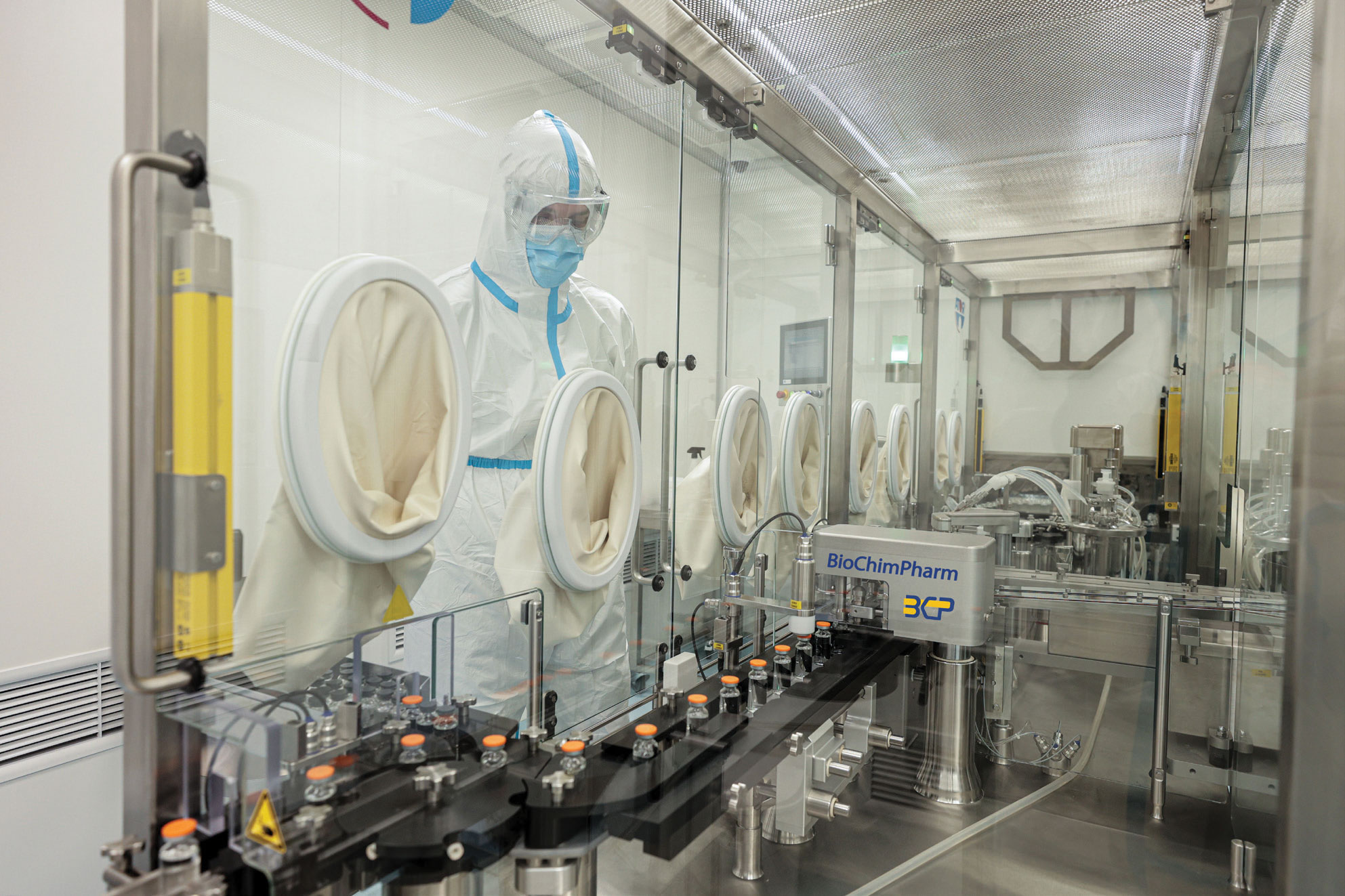
Rati moved to the marketing department and led the promotional campaign for BioChimPharm’s leading product, Phagio, from 2014 to 2015. The low-budget but highly effective advertising clip featuring Olympic champion shooter Nino Salukvadze, who targeted and eliminated bacteria with the same precision typical of phages, significantly raised awareness of Phagio. The campaign was aimed at parents and medical professionals – a segment where phage-based drugs would create exceptionally high value. “Neither parents nor pediatricians want to prescribe antibiotics to children if they can avoid it,” Rati explains. Phagio is now sold in approximately 1,000 pharmacies in Georgia and another 8,000 worldwide.
Having assumed the position of general manager in 2020, Rati Golijashvili decided to take BioChimPharm to the next level: “It was time to break out of Georgia and the region and to give ourselves the opportunity to sell our products in Europe and across the world.” This required compliance with European pharmaceutical standards and a complete overhaul of the company. The two-year modernization project to re-equip the enterprise was implemented with the support of EBRD, the European Union, as well as agencies operating under the Ministry of Economy and Sustainable Development of Georgia – Enterprise Georgia and Georgia’s Innovation and Technology Agency (GITA).
BioChimPharm is currently the only enterprise in the South Caucasus that produces sterile forms of medicine in accordance with European standards. After the modernization project, the number of the company’s employees increased from 30 to 72. The company owns 95% of the phage market in Georgia and is a significant player in the global phage industry. The enterprise has the potential to produce up to 30 million vials of drugs annually. As a result of implementing innovations in BioChimPharm and the broader field of biotechnology in the region, Rati made it onto the Forbes Georgia 30 Under 30 list three times, both in the Science and Entrepreneurship categories. He also chairs the Georgian Biopharmaceutical Cluster and is a board member of the Georgian Pharmacists Association.
“Almost everyone in Georgia considered it impossible to implement this project due to our small economy, infrastructural challenges, and lack of expertise in this field. In addition, the specificity of phage technology had to be considered. We basically had to assemble the plane in flight,” Rati recalls. According to him, there were many obstacles to overcome, but the success of the project was ultimately determined by a strong organizational culture, clarity of mission, and the selfless work of a multidisciplinary team: “Despite the challenges, our team is united around the core mission of fighting antimicrobial resistance and providing life-saving drugs to patients with antibiotic-resistant infections. This experience again convinced me that perseverance can transform an ambitious vision into reality.”
High-tech infrastructure and modernized production lines allow BioChimPharm to significantly increase its export activity area and create even more effective drugs for fighting resistant infections. The main barrier to exporting phages to the European market has already been overcome. Now, the challenge is to find the appropriate partners to ensure that Georgian phages reach European citizens.
Only a few years ago, countries of the West were still wary of phage therapy. This was mainly due to the mistrust of Soviet-era science. Although around 50 phage-related studies are currently underway, much of the data on phage treatment is from the Soviet period and needs revising in light of new scientific approaches and technology. For years, phage therapy was considered an experimental treatment and was only used when other methods failed, but this trend is rapidly changing. One of the most high-profile cases of successful use of phages in treatment involved a woman injured in the terrorist attack at Brussels Airport in 2016. The severely injured 30-year-old patient developed septic shock despite treatment with antibiotics. Doctors spent two years fighting the bacteria in the inflamed tissues with high doses of broad-spectrum antibiotics without success. In the end, the woman’s life was saved by bacteriophages sent from Tbilisi.
In 2023, the World Economic Forum named phages among ‘the top 10 tech set to change our lives.’ Phage engineering is a fascinating field. Phages programmed with new technology can precisely target unique bacterial species, either to produce therapeutic molecules or to enhance their sensitivity to specific drugs. Scientists can also direct phages to solve even more complicated problems and cure a wide range of diseases in humans, animals, and plants.
In the spring of 2024, the European Directorate for the Quality of Medicines and Healthcare established a regulatory framework for phage-based drugs: “They determined the standards that phage-based drugs must meet in terms of quality and content to be sold in European countries. This is essentially the green light for phages, and we want Georgian phages to be the first of their kind on the European market,” Rati says.
Apart from phage therapy, BioChimPharm products are used in agriculture and food safety. PowerPhage is an antimicrobial product that replaces antibiotics with phages in the meat, poultry, and livestock industries. 80% of global antibiotic usage is accounted for by farms, where they are used to make animals gain weight quickly and as a cheap alternative to maintaining farm hygiene. Antibiotic use in agriculture is a major contributor to a global problem: even if you’re not taking antibiotics to treat a specific illness, your body is getting some amount of antibiotics from food regularly.
Rati Golijashvili is confident that the future of phage technology is promising. As a pioneer of this technology, Georgia will play an essential role in defeating antibiotic resistance in the coming years. “Antibiotic resistance is as big a problem as global warming or cancer right now, and we have a literal and figurative cure,” Rati says.
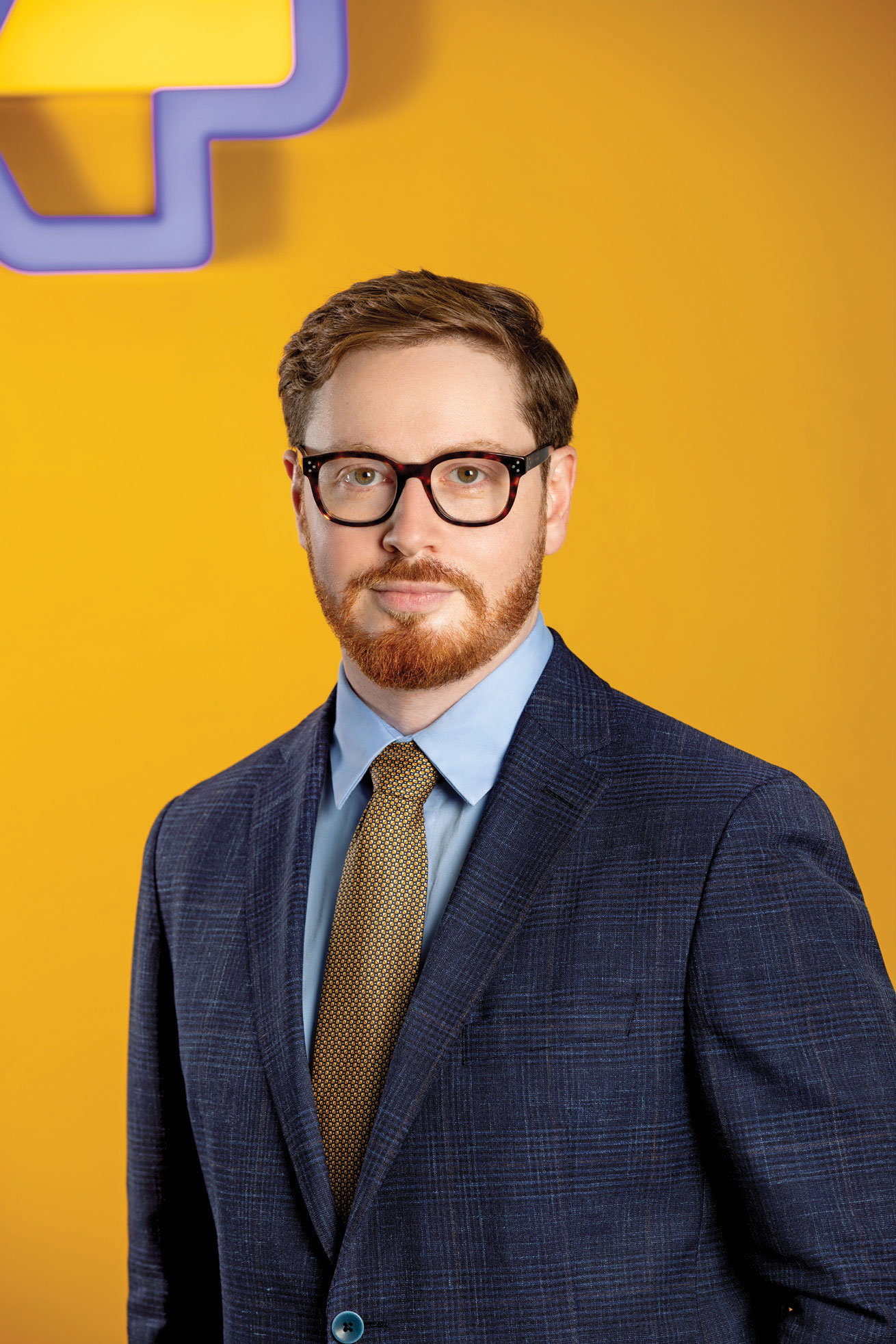
Naturally, Rati’s dedication to BioChimPharm and phage technology has both professional and personal roots. There are, in fact, no boundaries between his work and other areas of his life. This is unsurprising considering to what extent his biography is associated with phages. As the manager of a biopharmaceutical company, his challenging mission is to ensure continuous scientific progress while balancing this with commercial interests. Not to mention the global mission to position Georgia on the international map of modern biotechnology.
Rati believes that good managers must lead by example: “I strive to be as direct as possible in my business relationships, and I expect the same in return.” BioChimPharm employs people of different generations and with varying levels of experience. The blend of tradition and innovation, combined with the older generation’s experience and the young employees’ determination, has enabled the company’s continuous growth.
It is remarkable how meticulously Rati knows all the details of BioChimPharm’s operations. He recalls reading dozens of books at each new stage of the company’s development and trying to put theoretical knowledge into practice immediately. He studied pharmaceutical marketing, biotechnological patenting specifics, and high-tech companies’ development strategies. During the modernization stage, Rati and his team had to source and analyze a vast amount of information: “I still know the price, parameters, and specifications of each device we purchased. Engineers, technicians, lawyers, procurement managers, representatives of the quality assurance team – we were all involved in the retooling process.”
In the future, as envisaged by Rati, BioChimPharm will become a global player not only in the phage industry but also in the pharmaceutical market. At the same time, Georgia will emerge as the center of the fight against antibiotic resistance: “I may not know each step in advance, but I can clearly see how we get to a specific point. Every decision my employees and I make is a step toward getting to that point,” Rati says.
The young innovator is confident that with sufficient determination and support from international partners, Georgia will become a hub for researchers, scientists, businesses, and global organizations involved in the fight against antibiotic resistance. Having a clear vision of the future is important, but Rati’s even more impressive leadership quality is his ability to project the big picture and direct the team’s efforts toward a common goal.
BioChimPharm is far from an ordinary biopharmaceutical company. With its unique historical background, the phage enterprise is a flagship for Georgia’s biotechnology and science sectors. The transformation of the historic lab into a high-tech company demonstrated that bridging the past and the future is indeed possible. Given the growing global interest in phages, Giorgi Eliava’s vision of Georgian technology changing the world for the better may not be far from being realized.



